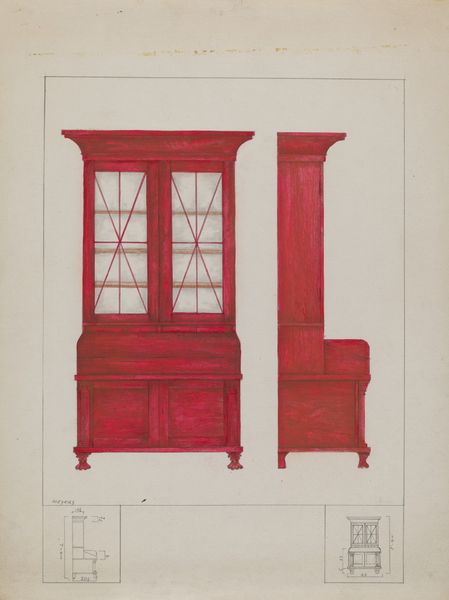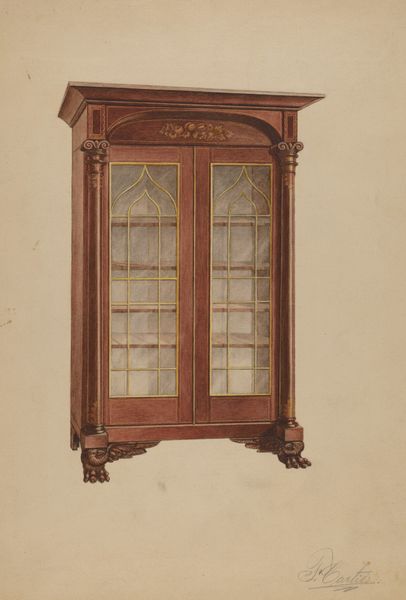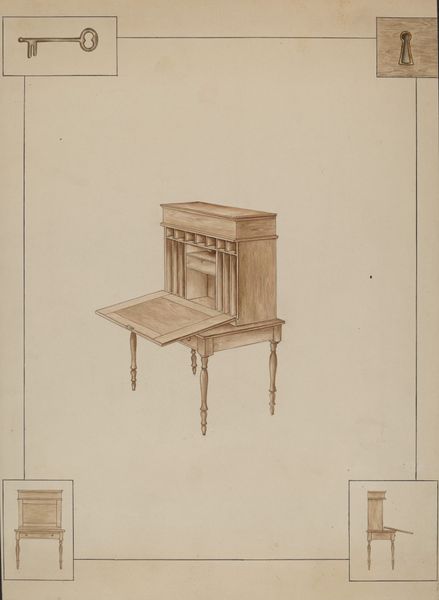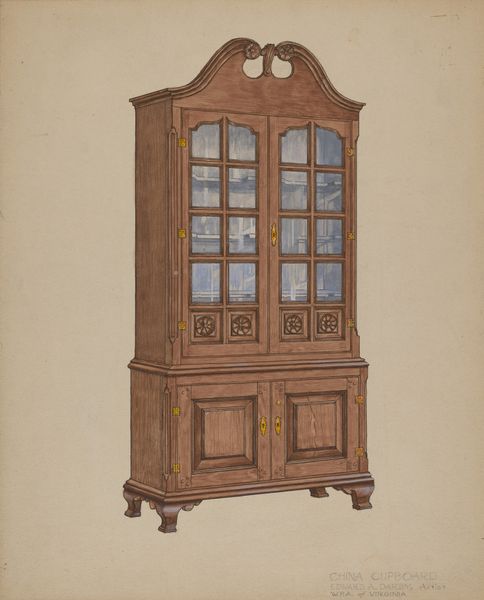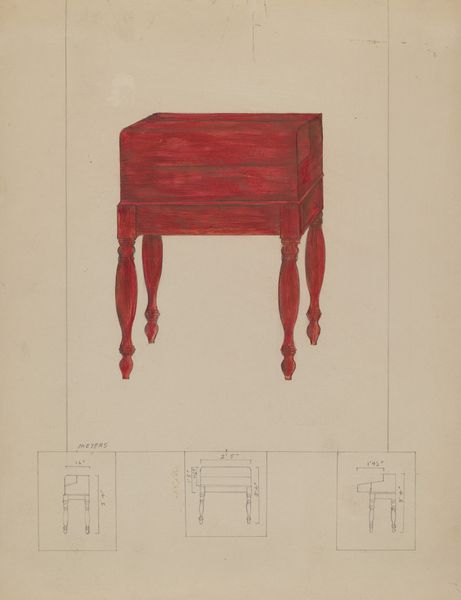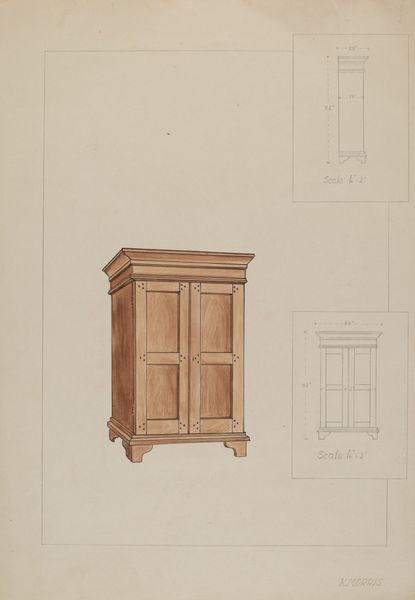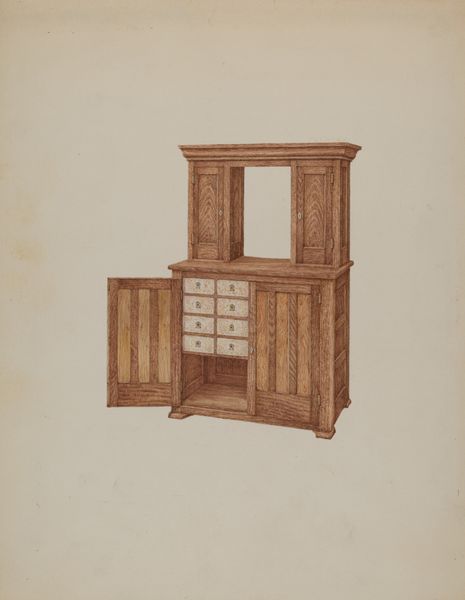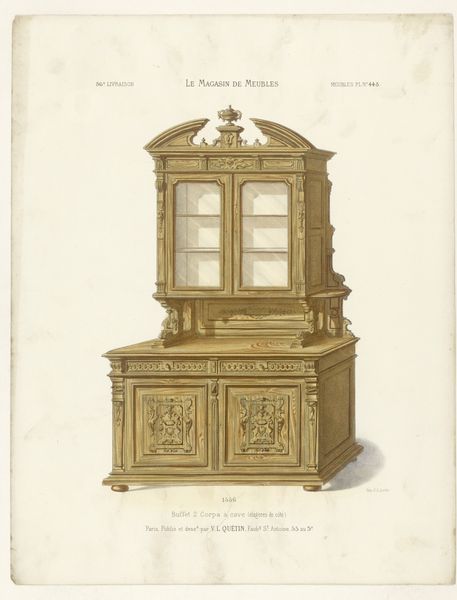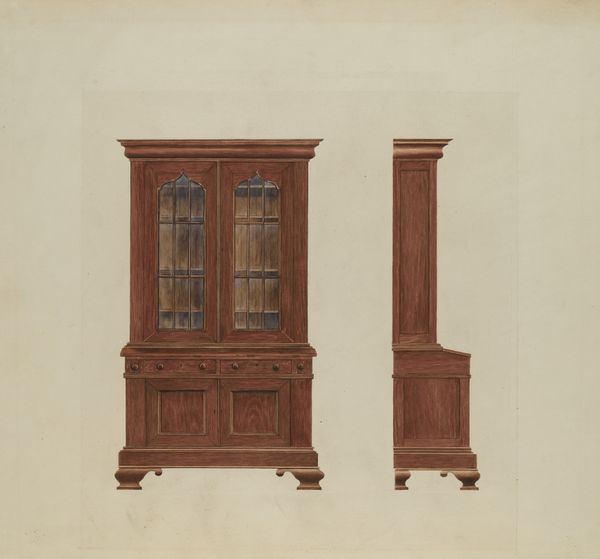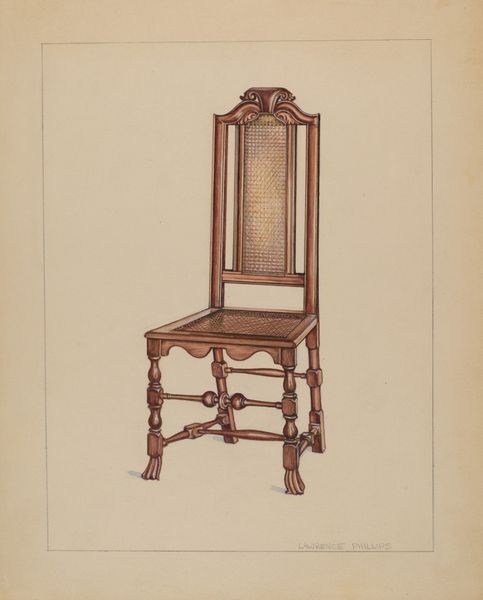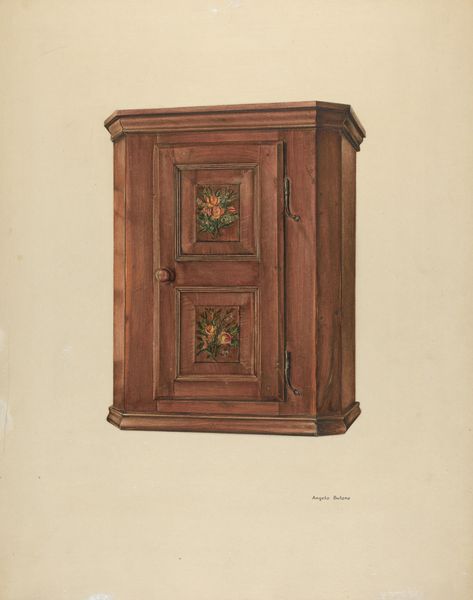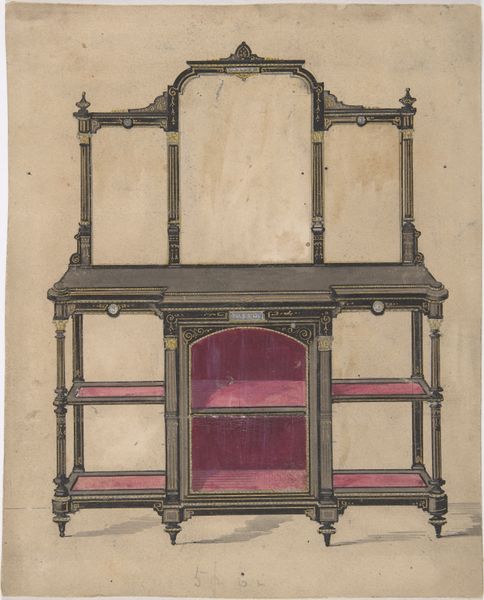
drawing, paper
#
portrait
#
drawing
#
etching
#
paper
#
watercolour illustration
Dimensions: overall: 35.6 x 27.9 cm (14 x 11 in.)
Copyright: National Gallery of Art: CC0 1.0
Curator: Here we have Henry Meyers' "Bookcase," a watercolor illustration dating between 1935 and 1942. It’s a rather striking rendering, wouldn’t you agree? Editor: It's surprisingly assertive. That strong red hue against the stark paper… it feels almost defiant, especially considering the relatively domestic subject matter. Curator: Precisely! Meyers masterfully utilizes the watercolor medium to create these dynamic color relationships and formal harmonies. The composition—the strong verticality countered by the geometric patterns in the glass—it creates a visual tension. Notice the artist’s acute attention to detail in the moldings and joinery of the piece itself. Editor: I’m seeing echoes of the social context of the period. The deliberate choice to depict something as functional as a bookcase… isn’t there a conversation to be had about design's role in shaping domesticity and perhaps even reinforcing particular social hierarchies at this time? Consider that in the '30s and '40s access to resources varied wildly. Curator: Interesting, however the piece showcases careful line work and shadowing to suggest depth. The overall composition of shapes is the work’s strength. Editor: Agreed that Meyers commands his craft, but his craft underscores design accessibility, or its lack thereof. In a society dealing with scarcity during the interwar and war years, such an idealized presentation of domestic furnishing is provocative and inherently political. Whose bookshelves looked like this? And whose did not? Curator: It also highlights the stylistic preferences of the era, and presents a clear structural rendering of period furnishings. Editor: Definitely! The artist's medium itself—watercolour on paper—speaks to its function. It is in essence, a plan or schematic, pointing us towards both design and aspiration. And as an artifact, it serves as a reminder of an era framed by profound social and economic anxieties. Curator: Yes, seeing past simple representation, one sees the harmony between form and function in this plan—a careful choreography of lines and colour creating a dynamic image that lingers in the mind. Editor: Exactly, it is about seeing the larger world implicit in these objects, an interplay between artistry and culture that allows this simple image of a bookcase to reveal complicated truths.
Comments
No comments
Be the first to comment and join the conversation on the ultimate creative platform.
